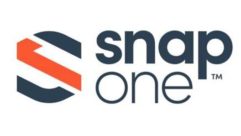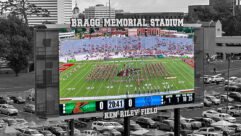
Putting the AV in Education
Sep 1, 2008 12:00 PM,
By Dan Daley
AV infrastructure for media training programs is a special challenge.

Atlanta’s SAE Institute of Technology features classic, large-format mixing consoles such as a Sound State Logic G series board (top) and a Neve VR60 (bottom), but they also steer students toward Digidesign Pro Tools, which is integrated into the school’s central network.
As important as they are to the work of systems integrators, AV systems used for paging, security, and conferencing have a largely peripheral place in most average people’s lives. Few people head to the office each day eagerly anticipating an interaction with the voice-mail system or playing with the HVAC thermostat. But in one thriving niche in education, something like that is indeed the case. In the arena of teaching entertainment-media technology, the media is also the message. In more than 600 programs listed with the Audio Engineering Society (AES), tens of thousands of students each year head to highly focused schools intent on learning the technology systems of audio, video, and multimedia production — systems that have a high degree of integration with each other, the rest of the facility, and in some cases, the rest of the world.
Here’s a look at the AV infrastructure and philosophies at a couple of them.
ATLANTA SAE INSTITUTE
The newest SAE Institute of Technology (formerly the School of Audio Engineering)in Atlanta opened last year in, appropriately enough, the Hard Rock Café building. It joins four others already operating in New York, Miami, Los Angeles, and Nashville, Tenn. Inside, 10 full recording studios and control rooms and nearly twice that many digital-audio workstation suites are home to students learning the ins and outs of professional audio and music production. Putting the place together called for expertise that straddles both conventional studio construction and systems integration.
The studios and workstation suites are connected to a central server and a master control room via Cat-6 cabling that runs along raceways in the ceilings. Two 1TB servers are allocated to school administration, and another 1TB server is accessible by students to store and retrieve their work in the form of audio and metadata. It also contains video tutorials, reference material, and other learning resources. Instructors can pull students’ work from the student server and drag it to the administrative servers, where they can review and grade it. Afterward, they can post the work back to the student server so students can see their grades and review any notes the instructor has left in their own password-protected folders.
“We’ve pretty much eliminated paperwork for testing and grades,” says Chris Davie,director of the Atlanta school. Recordable media such as CD-Rs, flash drives, and portable hard drives play a role in moving files around, but because all incoming students are given Apple MacBook laptop computers, this creates a high degree of compatibility that encourages direct uploading and downloading of data through Apple Airport Wi-Fi nodes throughout the school. The master control-room main computers (also Apple G5s with external RAID arrays) run custom software that lets students book hands-on time in the studios and workstations in a paperless, automated environment.
The studio systems ride on a custom network installed by the school’s own network architect, Tymon Mattoszko, who is based out of the flagship New Yorkcampus. All of the studios and the Apple computers in each studio that run the audio software programs, such as Digidesign Pro Tools, are linked back to the master control room. Instructors can watch and provide feedback or answer questions in realtime as students work. School administrators can transfer data between campuses in the United States and SAE’s other schools in Europe, Asia, and Australia using a central server in New York as a hub. Music and video files can theoretically be used in inter-school creative collaborations using FTP sites, although Davie says that has yet to occur.
There are two unique challenges that the school administrations have had to address. With Wi-Fi as ubiquitous as it is in order to streamline the dataflow, it’s also tempting for Internet-adept students to just surf the Web during class — keeping a waveform screensaver handy, much like a history textbook enclosing a comic book, in case the teacher cruises by. It’s a fact of life for SAE, where Davie says the IT coordinator has purposely limited the range of the Apple AirPort nodes near classrooms, but not near or in studios and other hands-on work areas where the students are all too happy to be engaged. There are also heavy-duty firewalls around the administrative servers to prevent any students’ attempts to monkey with grades.
The mixing consoles that students work on, such as the Neve V Series and Sound State Logic (SSL) G Series, are both classic pieces of music-recording technology and also what many graduates will find out in the real world. However, though these platforms are automated to handle tasks such as recalling fader moves of mixes, the onboard computers they use are ancient by modern standards.
“When they see a DOS window open up on a [Neve] Flying Faders [console-automation] screen, you can see their faces go completely puzzled, like, ‘What’s this?’” Davie says. “The console automation is simply too old to be integrated with the school’s network. That’s why we try to steer much of the music mixing into Pro Tools, which can ride on the network.”
1
Putting the AV in Education
Sep 1, 2008 12:00 PM,
By Dan Daley
AV infrastructure for media training programs is a special challenge.

Full Sail University’s live-sound mixing stage is part of the Orlando, Fla.-based school’s Show Production and Touring program.
FULL SAIL
Full Sail University’s main campus in the Orlando, Fla., area sprawls over 180 acres. It includes a Hollywood-style backlot as well as 110 hands-on labs and 58 classrooms, some of which are set up as theaters. (It has a smaller satellite school in Los Angeles.) Not surprisingly, many of the classrooms and labs are autonomous in terms of interaction with a central control center and distribution of content. Audio recording and mixing rooms that can draw from and store to central servers and video rooms are linked to Avid Unity ISIS streaming servers, but quotidian functions such as attendance-taking stay within dedicated computers in each room, which also have individual projection and monitoring systems — although an Extron IP Link system does monitor projectors for maintenance purposes.
High-definition video has recently been added to the university’s graphics-degree program, but the scale of the school influences how HD video is compressed, using the Apple intermediate HDV codec, to address the inevitable space limitations that a student body of 5,600 puts on the school’s storage infrastructure.
“It’s a balance between space and access time and how many students can stream HD video simultaneously,” says Michael Sangrey, Full Sail’s director of technical services. The distance-learning program, which started last October, has its own audio and video content as opposed to recorded versions of classes used by attending students, putting that much more of a load on data storage.
A distributed-audio system exists in the school buildings, but Sangrey says the paging function it was intended for has been largely supplanted by use of cell phones and campus-wide Wi-Fi. (Each student can opt into a school-supplied, Wi-Fi-enabled laptop — either an Apple MacBook Pro or HP Mobile Workstation — at additional cost.) In fact, an emphasis on keeping hands on the technology hardware is the overarching philosophy behind Full Sail’s systems architecture.
“We’re trying to get [the students] to see the technology, rather than experience it in a virtual sort of way,” Sangrey says. “In classrooms, we have two projectors operating. One will project an image from the screen of the Pro Tools [digital audio] system and the other will have the image from the instructor’s laptop or from the screen of the console.”
Each classroom has KSI in-ceiling loudspeakers for instructor microphone amplification and playback of some content. The music and postproduction studios bring out the big guns: JBL LSR series monitors and Dynaudio Acoustics BM15A and powered BM6 loudspeakers. But Sangrey says desktop audio systems are becoming a more common factor as the school expands and professional audio in general migrates more to the personal workstation environment.
“The whole point here is to mimic which technologies are used and how they are used in the real world, and that’s something that’s constantly changing,” he says. That’s another reason why campus-wide system infrastructure upgrades can be risky propositions, versus a more modular approach in which each type of media technology is updated as its own larger culture changes.
A good example is the shift from “battleship” mixers such as large-format SSL and Neve consoles to smaller platforms, such as the SSL AWS 900+ digitally controlled analog mixer paired with a Pro Tools system that has become a familiar combination in conventional and project studios. Newer large-format consoles are also becoming more common, such as the Digidesign Icon that populates Full Sail’s Mix Palace facility. Here, a dozen Icons are set up in a honeycomb of 24/7 rooms to teach audio postproduction. These consoles are linked to a remote desktop monitor used by the instructor. They also have a logout script written into their operating system that fully resets the console after each use.
“We want each student to have the exact same experience at the console,” Sangrey says. However, the scale of the school makes it less feasible to use an online booking method for these types of rooms. Instead, the central office programs a schedule for each student a month in advance.
Media technology education has shown consistent growth, even as some sectors of entertainment media — such as recorded music and DVD — have slipped or stalled in recent years. Their systems requirements are as varied as the schools themselves, ensuring a robust niche for systems designers and integrators in coming years.
2










